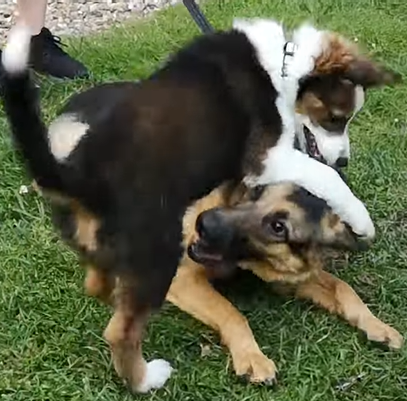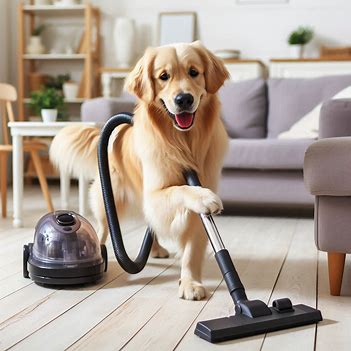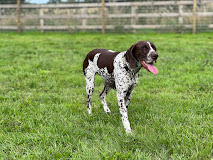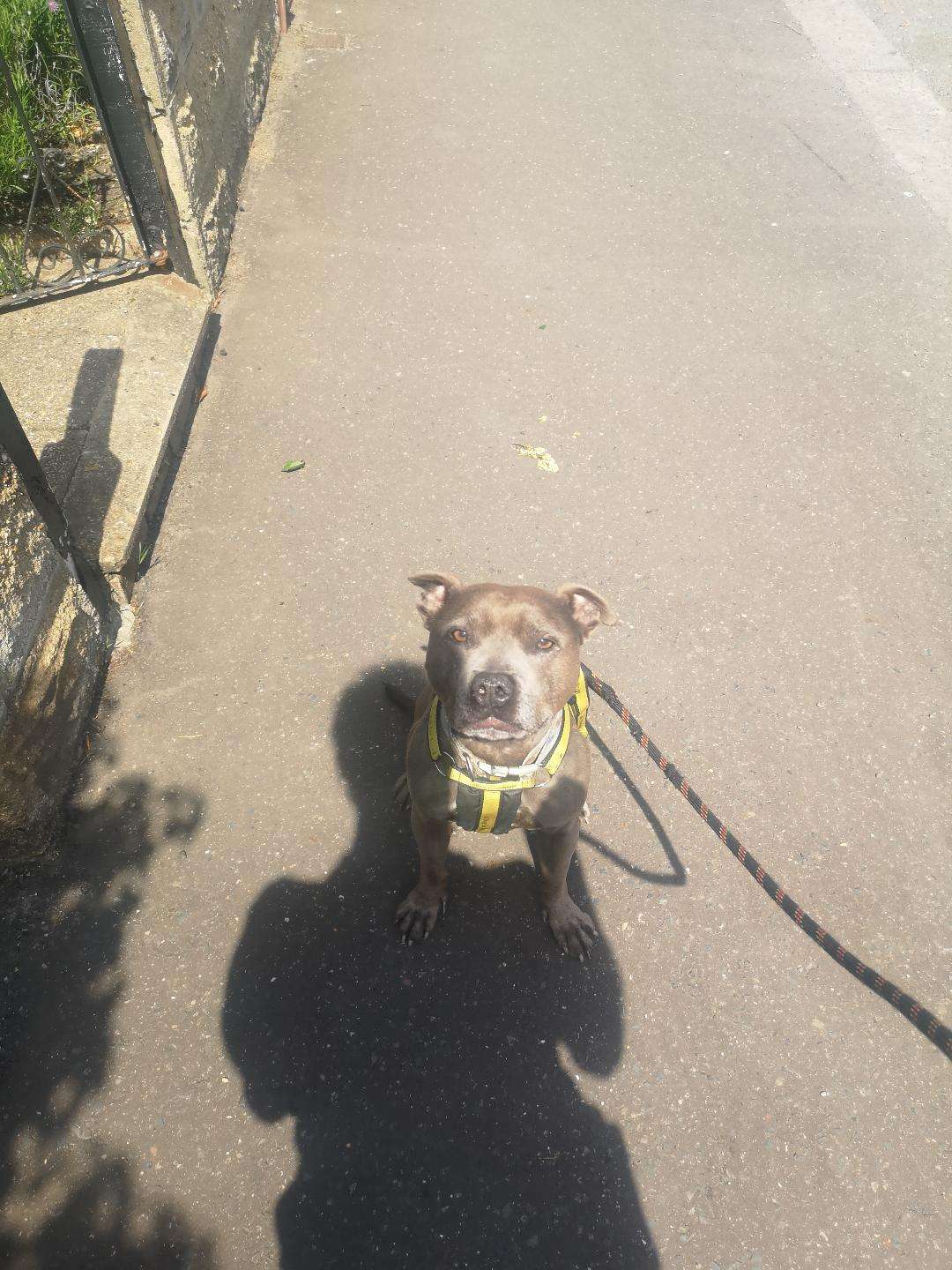Dogs are social creatures, and they need to interact with other dogs in order to live happy and fulfilling lives. However, not all dog-to-dog interactions are created equal. Some interactions can be positive and beneficial, while others can be negative and even harmful. The good news is most puppies get a good understanding from their litter mates aged between 5 and 8 weeks!
The interaction chain

Each interaction with every dog should go in the order of Hear or See, then Approach each other, go Nose to Nose, lasting on Nose to Rear where they should either decide to play or leave each other.
However at each stage things can go wrong.
See or Hear
Your dog sees or hears another dog. If your dog is immediately stressed or fearful, this is the first break in the chain. This could be shown by flight (trying to get away, pulling on the lead, whining, tail tucked, etc.) or by lunging, barking, and growling the main cause of this is that when they see another dog they think that it is important. It is important to each them just because they is a dog it doesn’t mean that they are going to meet.
Approach
If your dog is fine at first but struggles as the other dog gets closer, this is the second break in the chain. This could be shown by lying down or freezing, quietly observing but becoming stiff and growly, or barking, lunging, or growling.
Nose-to-nose
If your dog gets stuck at the non-nose part of the interaction, this is the third break in the chain. This could be shown by growling, stiffening, raising the hackles, raising the tail, tail going between legs, rolling over, or licking incessantly without the ability to disengage. Getting stuck in this part of the chain doesn’t necessarily look unfriendly – sometimes it can be hyperactive friendliness.
Move to rear
If the nose-to-nose goes well and so do all other previous parts of the chain, but then one or both dogs overreact when they arc in a circle to move to each other’s rear, this is the fourth break in the chain. All the different parts of this chain have a clear transition, and getting stuck in the transition can be the reason why your dog displays unpredictable behavior.
After the move to rear
Typically, this is when the dogs either move into appropriate play behavior (play bows, a healthy game of chase, etc.) or move on, having collected the information they needed and completed the conversation. with play it is important that this is equal for example a bigger dog playing with a small dog should allow the smaller dog to have the upper hand at times.
If your dog is struggling at any point in this chain, it is important to be patient and understanding. It may take some time and training for your dog to learn how to interact with other dogs in a positive way and both owners should be able to stop their dogs throughout the interaction.
Here are some signs of good dog-to-dog social interaction:
- Both dogs are relaxed and comfortable. Their tails are wagging loosely, their bodies are loose and wiggly, and their ears are perked up.
- The dogs are taking turns playing and chasing each other. They are not being too aggressive or pushy, and they are both having fun.
- The dogs are respecting each other’s personal space. They are not barking or growling at each other, and they are not trying to mount or hump each other.
Does your dog not give you the outcome that you would like. Please check out our dog training, we are more than happy to help put thing right.




